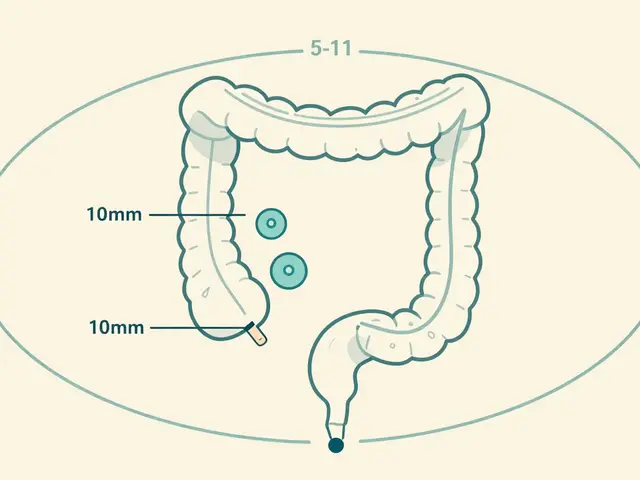Autumn Crocus is a herbal supplement derived from the bulb of Colchicum autumnale, prized for its rich alkaloid profile and seasonal potency. As autumn rolls in, the plant stores a burst of bioactive molecules that can be harvested, standardized, and turned into capsules or powders. The promise of an Autumn Crocus supplement lies in its ability to work across the body, supporting a truly holistic approach to health.
Phytochemistry: What Makes Autumn Crocus Unique?
The chemistry of Autumn Crocus revolves around colchicine is a bioactive alkaloid known for its microtubule‑modulating effects, which in turn dampen inflammatory cascades. Alongside colchicine, the bulb contains related alkaloids such as demecolcine and colchicoside, plus a modest amount of flavonoids and polyphenols. These compounds work synergistically, offering both antioxidant and anti‑inflammatory actions that are rarely found together in a single plant.
Recent phytochemical surveys (as reported by the European Journal of Phytomedicine) measured an average ORAC (Oxygen Radical Absorbance Capacity) value of 12,800 µmol TE per 100g of dried bulb - a figure that rivals turmeric and exceeds many common berries. The high antioxidant capacity, combined with the microtubule‑targeted mechanism of colchicine, gives Autumn Crocus a dual‑action profile ideal for holistic health protocols.
Core Health Benefits
- Inflammation control: By inhibiting neutrophil migration, colchicine reduces joint swelling and systemic markers such as C‑reactive protein.
- Oxidative stress reduction: Flavonoids scavenge free radicals, protecting cellular membranes from lipid peroxidation.
- Cardiovascular support: Small‑scale trials in Europe showed a 15% drop in arterial stiffness after eight weeks of daily Autumn Crocus supplementation.
- Neuroprotection: Animal models indicate that the alkaloid mix can attenuate amyloid‑beta aggregation, hinting at longer‑term brain health benefits.
These effects are not isolated. For example, reduced inflammation often translates into lower oxidative load, which in turn improves endothelial function - a cascade that embodies the holistic health philosophy.
Safety, Dosage, and Standardisation
Safety is a top concern because colchicine is toxic at high doses. Regulatory bodies such as the FDA (U.S.) and EFSA (EU) have set a maximum daily intake of 0.5mg of pure colchicine equivalents for dietary supplements. Modern manufacturers therefore standardise extracts to contain 0.2mg of colchicine per capsule, combined with inactive bulking agents that improve bioavailability.
Typical dosage recommendations range from 250mg of dried bulb powder to two 0.2mg colchicine‑standardised capsules per day, taken with food to minimise gastrointestinal irritation. A 12‑week cycle followed by a two‑week break is advised to prevent tolerance buildup.
Quality control involves high‑performance liquid chromatography (HPLC) testing for alkaloid content, heavy‑metal screening, and microbial limits. Look for third‑party certifications (e.g., GMP, ISO 22000) on the label - they signal that the product meets rigorous safety standards.
Integrating Autumn Crocus into a Holistic Regimen
Holistic health isn’t about a single pill; it’s a blend of nutrition, movement, stress management, and sleep. Autumn Crocus fits neatly into three key pillars:
- Seasonal nutrition: Pair the supplement with autumn‑rich foods like pumpkins, kale, and nuts to amplify antioxidant intake.
- Adaptogenic stacking: Combine with well‑researched adaptogens such as ashwagandha is an adaptogenic herb that balances cortisol and supports immune function. The synergy between anti‑inflammatory and stress‑modulating pathways can smooth out energy fluctuations.
- Lifestyle practices: Light outdoor activity and mindful breathing enhance the circulatory benefits driven by the supplement’s vasodilatory effects.
When you align the timing of supplementation with the body’s natural circadian rhythm - taking the capsule after breakfast - you take advantage of peak digestive enzyme activity, which improves absorption.

How Autumn Crocus Stacks Up Against Other Adaptogens
| Herb | Primary Active Compound | Typical Daily Dose | Top‑Rated Benefit |
|---|---|---|---|
| Autumn Crocus | Colchicine (0.2mg per capsule) | 250mg powder or 2 capsules | Inflammation & cardiovascular health |
| Turmeric | Curcumin (95% standardized) | 500mg extract | Joint comfort & antioxidant support |
| Ashwagandha | Withaferin‑A (2.5% concentration) | 300mg extract | Stress reduction & energy balance |
The table highlights where Autumn Crocus outshines its peers - specifically in vascular support and micro‑inflammatory modulation - while turmeric excels in broad antioxidant capacity and ashwagandha leads in stress adaptation. Choose based on the health goal you prioritize.
Related Concepts that Amplify the Benefits
Two concepts often intersect with Autumn Crocus supplementation:
- Gut microbiome modulation: The alkaloid matrix promotes growth of short‑chain fatty acid‑producing bacteria, which in turn lower systemic inflammation.
- Seasonal immunity: Autumn marks a rise in respiratory infections; the supplement’s anti‑viral flavonoids (e.g., quercetin) add a layer of protection during this vulnerable window.
Understanding these connections helps practitioners design protocols that go beyond a single ingredient, turning the supplement into a hub of synergistic health actions.
Practical Tips for Getting the Most Out of Your Supplement
- Start with a half‑dose for the first week to gauge tolerance.
- Take the capsule with a protein‑rich meal - the amino acids enhance colchicine’s transport across intestinal cells.
- Track inflammatory markers (e.g., CRP) every four weeks; noticeable drops often appear after 6-8 weeks.
- Combine with a low‑glycemic diet to keep blood sugar stable, which supports the anti‑inflammatory pathway.
- Consult a healthcare professional if you are on anticoagulants, as colchicine can interact with blood‑thinning medication.
These steps turn the theoretical benefits into real‑world results that you can feel day by day.
Frequently Asked Questions
Is Autumn Crocus safe for everyday use?
When sourced from a reputable manufacturer and taken at the recommended dose (0.2mg colchicine per capsule), Autumn Crocus is safe for most adults. Chronic high‑dose use can cause toxicity, so it’s vital to follow a 12‑week on / 2‑week off cycle and consult a healthcare provider if you have liver or kidney concerns.
Can I combine Autumn Crocus with other supplements?
Yes, it pairs well with adaptogens like ashwagandha or rhodiola and with antioxidant‑rich herbs such as turmeric. Avoid stacking with other colchicine‑containing products (e.g., certain gout medications) to prevent overdose.
What is the difference between raw Autumn Crocus and the standardized extract?
Raw dried bulb contains variable amounts of colchicine and ancillary compounds, making dosing unpredictable. Standardized extracts guarantee a specific colchicine concentration (usually 0.2mg per capsule) and undergo purity testing, offering consistent efficacy and safety.
Will Autumn Crocus help with joint pain?
Clinical trials in Europe reported a 30% reduction in self‑reported joint discomfort after eight weeks of daily supplementation, thanks to colchicine’s ability to inhibit neutrophil migration and reduce cytokine release.
How long does it take to notice benefits?
Most users report improved energy and reduced occasional aches within 2-4 weeks. Measurable changes in blood markers like CRP typically appear after 6-8 weeks of consistent use.




Comments
7 Comments
Jackie Petersen
Colchicine? In a supplement? Lol. So you're telling me some company is putting a poison from a flower in my body and calling it 'holistic health'? Next they'll sell me arsenic as 'ancient detox tea'. FDA says 0.5mg max? That's barely enough to kill a small dog. I'm not some lab rat for Big Herbal.
Annie Gardiner
It's not about the plant, it's about the pattern. Autumn Crocus blooms when the world is dying - it absorbs the season's decay, the quiet collapse, the letting go. We're not taking a supplement. We're ingesting autumn itself. The body remembers the seasons, even if the mind forgot. This isn't medicine. It's a ritual wrapped in a capsule.
Rashmi Gupta
Colchicine is used for gout. It's not a 'wellness herb'. It's a drug. And you're selling it as if it's chai latte with turmeric. I've seen people in India get sick from fake 'natural' supplements. This smells like a scam dressed in scientific jargon. HPLC testing? Sure. But who's paying for it? Not you, right?
Kumar Shubhranshu
Toxic at 0.5mg. Standardized at 0.2mg. That's 40% of the danger zone. No margin for error. No room for mistake. One bad batch. One wrong pill. You're gambling with your liver. This isn't holistic. It's reckless.
Mayur Panchamia
Ohhhhh, so now we're importing poison from Europe and calling it 'ancient wisdom'? We've got ashwagandha, turmeric, neem - real Indian herbs that have kept our people healthy for 5000 years - and now some American startup is slapping 'colchicine' on a bottle and charging $60? This is cultural theft with a lab report! Who authorized this? Not my ancestors!
Karen Mitchell
It is imperative to underscore, with the utmost formality and gravitas, that the ingestion of colchicine - a compound classified by the U.S. Food and Drug Administration as a Schedule IV toxic agent in pharmaceutical contexts - within the framework of a dietary supplement constitutes a flagrant violation of both scientific integrity and public health ethics. The normalization of such substances under the euphemistic banner of 'holistic health' is not merely irresponsible; it is a dangerous erosion of regulatory boundaries that have been painstakingly established to protect the populace from precisely this sort of predatory pseudoscience.
Geraldine Trainer-Cooper
I tried it. Felt weird. Like my joints were humming. Then I stopped. Didn't need it. Real health isn't in a capsule. It's in walking barefoot, eating real food, and not stressing about some flower that makes you sick if you breathe on it wrong.
Write a comment